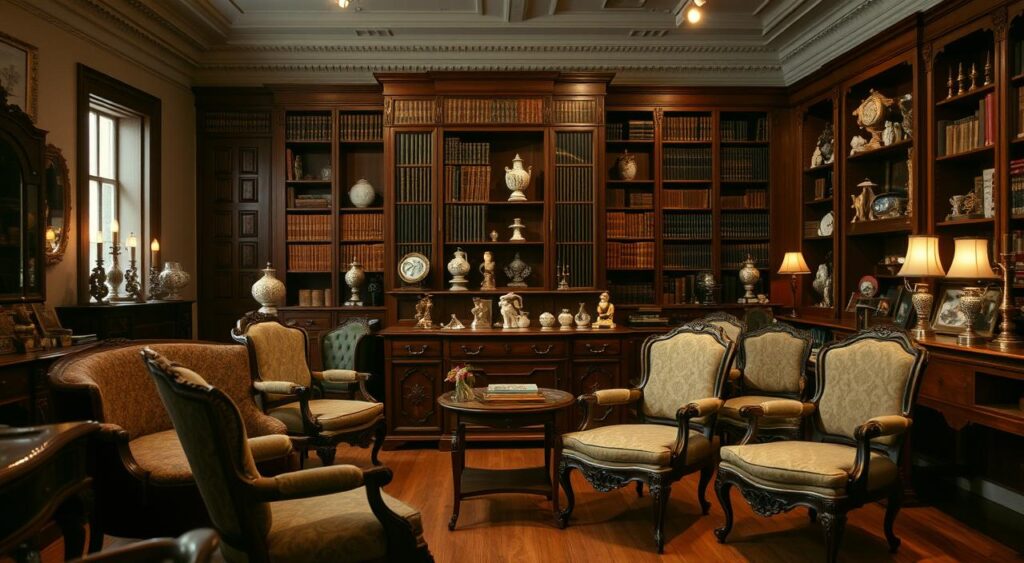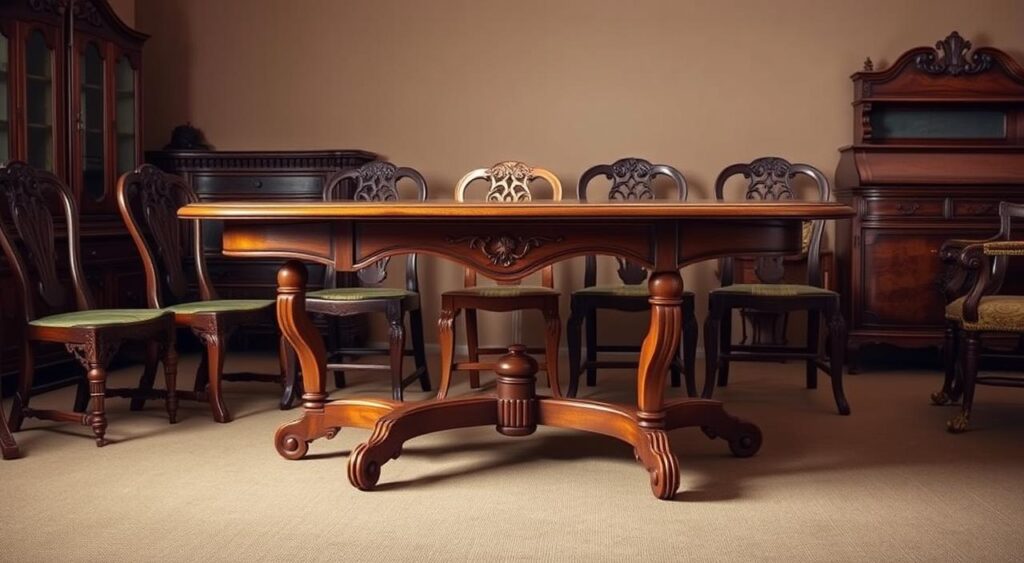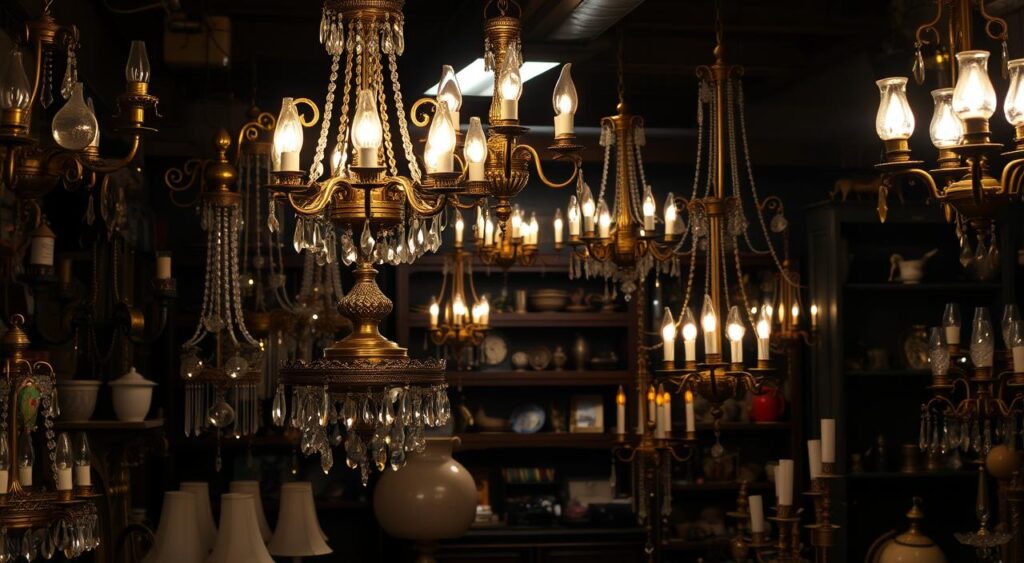Preserving antique fixtures in London is essential to maintaining the unique charm and historical significance of the city’s architectural heritage. From Georgian terraces to Edwardian townhouses, these period homes contain original elements that embody centuries of craftsmanship. With the right approach, you can protect these treasured details while adapting your home for contemporary living.

Key Takeaways
- Understand why antique fixtures are essential to historic London homes.
- Learn how to clean and maintain antique materials like wood and brass.
- Discover how to protect patina and original finishes.
- Manage environmental threats such as humidity and heating.
- Know when to consult conservation experts for specialist items.
Why Antique Fixtures in London Homes Matter
The appeal of historic London homes lies in their authentic features—ornate door handles, original bannisters, sash windows, carved fireplaces, and more. These fixtures are not just decorative; they tell the story of the property’s era and the people who lived there.
| Fixture Type | Historical Role | Preservation Tip |
|---|---|---|
| Brass Door Handles | Reflects material preferences of the 18th–19th c. | Polish gently to preserve aged patina |
| Wooden Bannisters | Showcases historic joinery and craftsmanship | Wax biannually to protect finish |
| Cast Iron Details | Highlights industrial-era innovation | Clean with soft cloth and avoid abrasives |
How Patina Adds Value and Character

One of the defining features of antique fixtures in London is the natural patina they develop over time. Patina refers to the gentle wear, subtle colour changes, and aged finish that materials like wood, metal, and leather acquire with use. Far from being a flaw, patina adds character and value to antique elements.
Maintaining this finish requires restraint—over-cleaning or refinishing can erase decades of history. For example, polishing brass until it gleams may remove a desirable aged surface.
Cleaning and Maintaining Antique Fixtures in London
Caring for antique furniture and fittings requires attention to the materials involved. Use the following guidance to clean and protect each type without damaging their historical integrity.
Wooden Features (Floors, Banisters, Furniture)
Wood is a primary material in many period homes. Whether it’s hardwood floors or decorative trim:
- Dust weekly with a soft, dry cloth.
- Use beeswax or carnauba wax twice a year to feed the wood.
- Avoid water-based cleaners or commercial sprays.
Brass and Metal Fixtures
London homes from the Victorian and Edwardian periods often feature intricate brass handles, doorknobs, and light fittings.
- Avoid modern metal polishes, which strip patina.
- Use 0000-grade steel wool (ultra-fine) with a dab of wax for gentle cleaning.
- For rare finishes like ormolu (gilded bronze), do not attempt DIY restoration—consult a specialist.
Upholstery and Fabric
Historic upholstered items need careful care. Many are made with delicate fabrics like silk or wool blends.
- Vacuum using a brush attachment or dust with a soft brush.
- Address spills with blotting (not scrubbing).
- For deep cleaning, hire a textile conservator.
Environmental Threats to Antique Fixtures in London

London’s climate—and modern living—can pose challenges to antique fixtures. Proactive measures are key to preserving original features.
Sunlight Damage
Direct sunlight fades wood and textiles. Use:
- UV-filtering window film
- Sheer curtains or blinds
- Position furniture away from south-facing windows
Humidity and Temperature Fluctuations
Old wood responds poorly to changes in moisture and temperature. Central heating can dry out air, causing wood to shrink or crack.
| Condition | Effect on Antique Fixtures | Prevention Tips |
|---|---|---|
| Low humidity | Causes wood to crack/shrink | Use radiator humidifiers or bowls of water |
| High humidity | Encourages mould or warping | Ensure good ventilation and air circulation |
| Direct heat | Dries out wood/leather | Keep antiques away from radiators |
Heating Systems and Air Quality
Central heating, especially in winter, reduces indoor humidity drastically.
Before any upgrades or property adjustments, consider protective house clearance in London to prevent damage to fragile antique items.
Solutions include:
- Clip-on radiator humidifiers
- Ceramic water trays
- Avoid placing antiques directly above heat sources
Caring for Unique Period Details

Certain fixtures require specialist treatment to preserve their detail and structure.
Veneers and Inlays
Often seen on antique desks or cabinets, veneers and inlays are delicate and prone to lifting.
- Avoid moisture and direct sunlight.
- Reattach loose veneer using reversible glue.
- Don’t sand or refinish—seek help for repairs.
Gilded Frames and Ormolu Trim
Gilded details are fragile and easily damaged.
- Do not polish gilded areas.
- Dust with a dry, soft brush only.
- Avoid touching with bare hands, which may leave residue.
Expert Help for Listed London Properties
If your property is Grade I or Grade II listed, it’s essential to maintain fixtures in compliance with conservation guidelines. Always consult with a conservation professional before:
- Removing original windows, fireplaces, or fittings
- Refinishing or replacing materials
- Repainting historic woodwork
Helpful Resources:
Renovating Without Damaging Antique Fixtures
Renovation work is sometimes necessary, but it’s important to plan with the original features in mind. Best practices include:
- Using protective sheets during construction
- Working with contractors familiar with period properties
- Avoiding adhesive hooks or fixtures that can damage wood or plaster
- Keeping original fixtures in place and visible where possible
Conclusion: Preserve London’s Architectural Heritage
Proper care of antique fixtures in London homes ensures their beauty and historical value are preserved for future generations. These elements are more than decorative details—they’re a living link to the past.
By managing your home’s environment, using the right materials, and knowing when to consult an expert, you protect not just your furniture and fittings, but also the cultural legacy of your London property.
Whether you’re a homeowner or a heritage enthusiast, every effort to care for antique elements helps retain the soul of your building—and contributes to London’s story as a city that honours its past.





